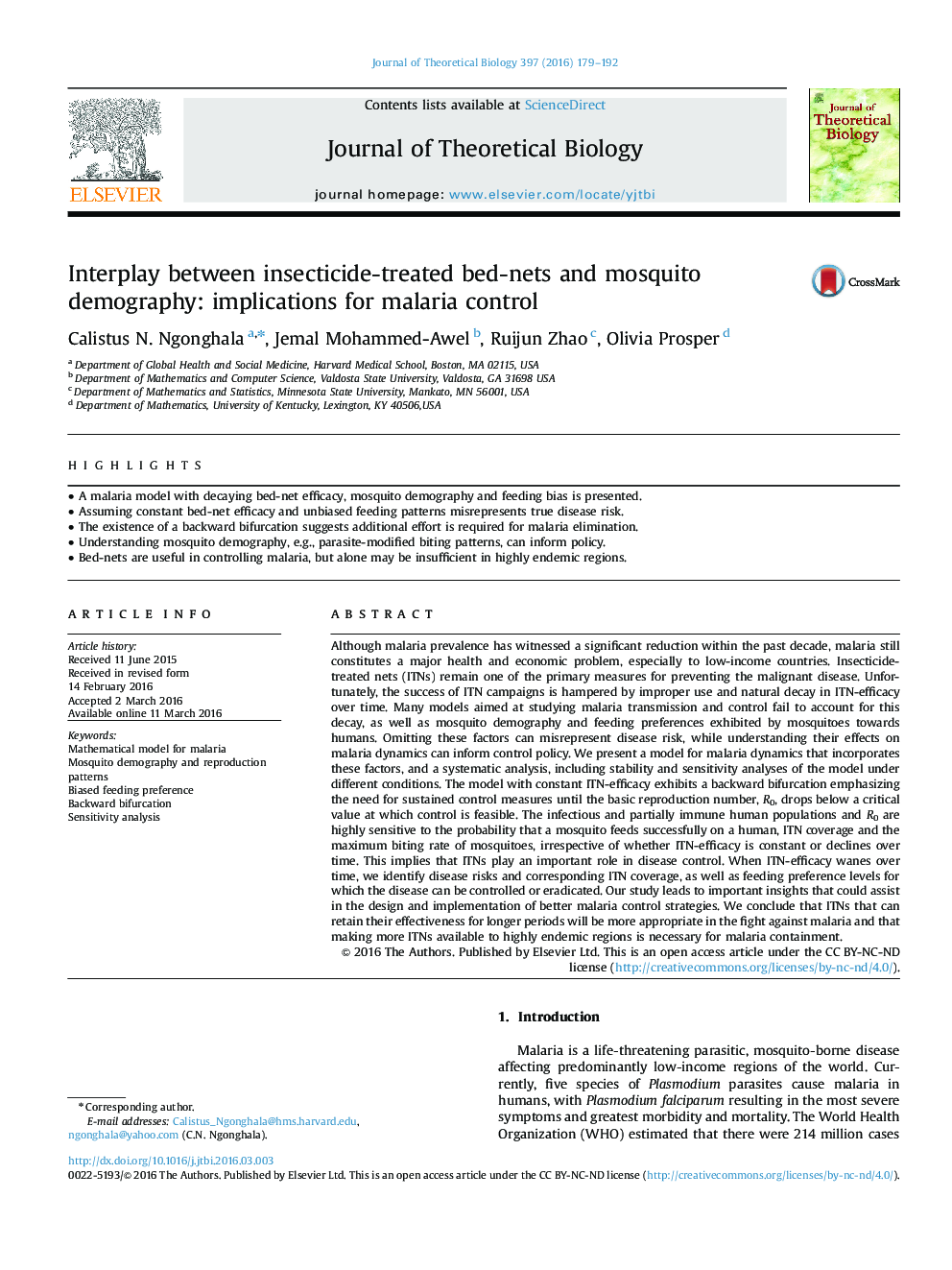| کد مقاله | کد نشریه | سال انتشار | مقاله انگلیسی | نسخه تمام متن |
|---|---|---|---|---|
| 6369280 | 1623813 | 2016 | 14 صفحه PDF | دانلود رایگان |
عنوان انگلیسی مقاله ISI
Interplay between insecticide-treated bed-nets and mosquito demography: implications for malaria control
ترجمه فارسی عنوان
تعامل بین تله های تخت خواب و بقایای پشه های حشره کش: پیامدهای کنترل مالاریا
دانلود مقاله + سفارش ترجمه
دانلود مقاله ISI انگلیسی
رایگان برای ایرانیان
کلمات کلیدی
مدل ریاضی برای مالاریا، جمعیت شناسی پشه و الگوهای تولید مثل، ترجیح تغذیه بی نظیر، دوچرخهای عقب، تجزیه و تحلیل میزان حساسیت،
موضوعات مرتبط
علوم زیستی و بیوفناوری
علوم کشاورزی و بیولوژیک
علوم کشاورزی و بیولوژیک (عمومی)
چکیده انگلیسی
Although malaria prevalence has witnessed a significant reduction within the past decade, malaria still constitutes a major health and economic problem, especially to low-income countries. Insecticide-treated nets (ITNs) remain one of the primary measures for preventing the malignant disease. Unfortunately, the success of ITN campaigns is hampered by improper use and natural decay in ITN-efficacy over time. Many models aimed at studying malaria transmission and control fail to account for this decay, as well as mosquito demography and feeding preferences exhibited by mosquitoes towards humans. Omitting these factors can misrepresent disease risk, while understanding their effects on malaria dynamics can inform control policy. We present a model for malaria dynamics that incorporates these factors, and a systematic analysis, including stability and sensitivity analyses of the model under different conditions. The model with constant ITN-efficacy exhibits a backward bifurcation emphasizing the need for sustained control measures until the basic reproduction number, R0, drops below a critical value at which control is feasible. The infectious and partially immune human populations and R0 are highly sensitive to the probability that a mosquito feeds successfully on a human, ITN coverage and the maximum biting rate of mosquitoes, irrespective of whether ITN-efficacy is constant or declines over time. This implies that ITNs play an important role in disease control. When ITN-efficacy wanes over time, we identify disease risks and corresponding ITN coverage, as well as feeding preference levels for which the disease can be controlled or eradicated. Our study leads to important insights that could assist in the design and implementation of better malaria control strategies. We conclude that ITNs that can retain their effectiveness for longer periods will be more appropriate in the fight against malaria and that making more ITNs available to highly endemic regions is necessary for malaria containment.
ناشر
Database: Elsevier - ScienceDirect (ساینس دایرکت)
Journal: Journal of Theoretical Biology - Volume 397, 21 May 2016, Pages 179-192
Journal: Journal of Theoretical Biology - Volume 397, 21 May 2016, Pages 179-192
نویسندگان
Calistus N. Ngonghala, Jemal Mohammed-Awel, Ruijun Zhao, Olivia Prosper,
